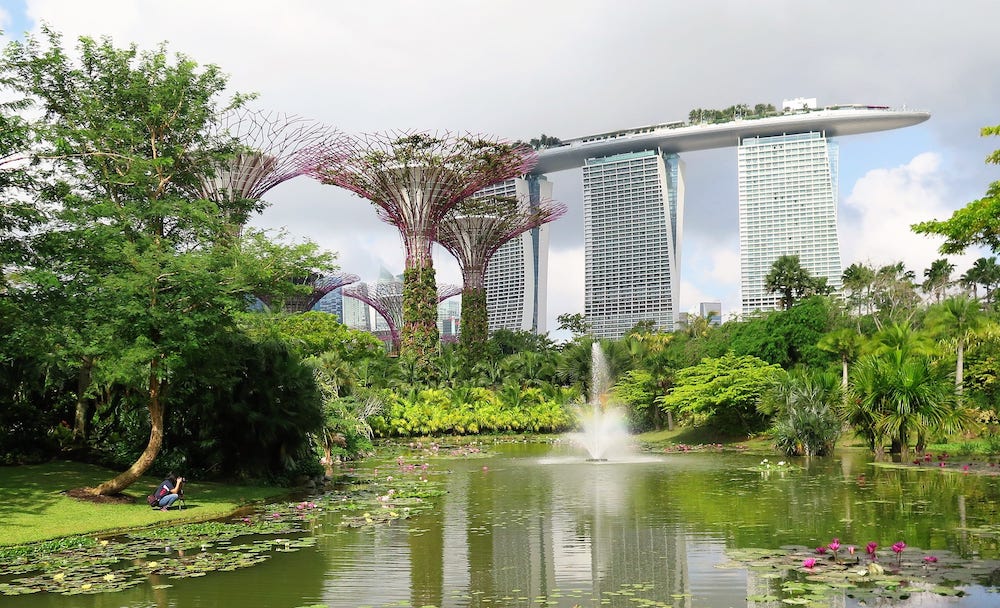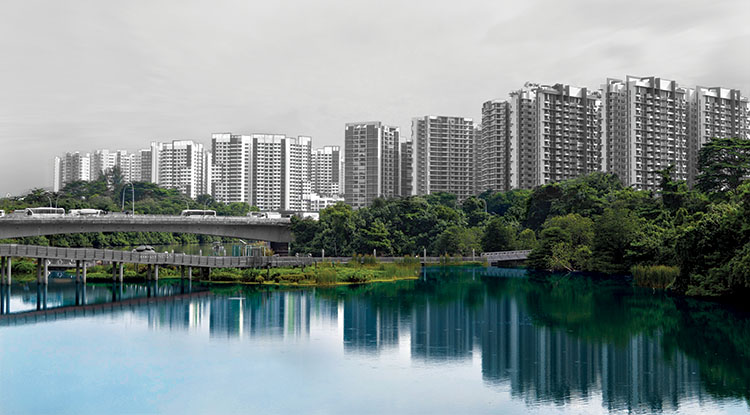Singapore: Asia’s little blue dot
September 3, 2017
As Southeast Asia begins to feel the pressures of climate change and urbanisation, water security is coming to the forefront of many national agendas. While many governments are facing issues of poor sanitation networks and clean drinking water supply compounded by land subsidence, sea level rise and increased flood risk, Singapore has spent the past 50 years turning chronic water scarcity into one of their biggest strengths. How does a small island with no natural resources become a water industry leader and icon for sustainable urban development in less than 50 years? Through long-term planning, intelligent investment in infrastructure and sheer political will.

Upon independence in 1965, Singapore faced three key water challenges—supply, storage and sanitation. The island’s low terrain and dense soil meant that despite having some of the highest rainfall in the world,

Lee Kuan Yew, Singapore’s founding father and first prime minister, famously said that “every other policy has to bend at the knees for our water survival”, and for Singapore, water really was a matter of national survival. Threats of political coercion from Malaysia, the destruction of the Johor pipeline during the Battle of Singapore in 1942, and the droughts and water rationing of the early 1960s underscored the importance of achieving water self-sufficiency. Furthermore, Lee recognised that his vision of a globally competitive city-state could not be realised without drastically improving the country’s water security and infrastructure.
The Four Taps
Central to Singapore’s pursuit of water self-sufficiency has been the diversification of supply, ensuring access to multiple taps should one run dry. The island today relies on four sources of water, known as the four taps: imported water, rainwater, recycled waste water and desalinated water. While still importing a large amount of its water from Johor (the first tap), Singapore has invested heavily in developing the other three taps with the aim of becoming water self-sufficient by 2060.
Primarily, diversification has meant improving rainwater catchment area and storage capacity. At independence, Singapore’s three reservoirs drew water from only 11 percent of the island. Today, the water catchment (the second tap) covers 60 percent of the island, supplying 17 reservoirs, and by 2060, this is projected to expand to 90 percent.
A City of Gardens and Water
Singapore’s relentless pursuit of water independence has brought it to the forefront of the hydrological industry. As a regional hub for research, education and innovation in water technology, the city-state attracts experts and students from all over the world. PUB actively supports the industry through project grants, scholarships and professional training programmes. As the majority of NEWater and desalination plants are run through public-private partnerships, these programmes have also attracted hydrological engineering, technology and infrastructure companies. Today, there are over 180 foreign and local companies working in Singapore’s water industry. This centralised expertise has enabled Singapore to share its experience with cities throughout Southeast Asia, advising on infrastructure, supporting regional development projects and providing aid in times of crisis.
For all its successes, however, Singapore still faces challenges in
Regional Mindset Shift
As countries across Asia face the impending challenges of climate change and urbanisation, developers, planners and policymakers are increasingly looking to Singapore for solutions. Although many governments in the region may not have the resources or capacity to implement blue-green infrastructure on an urban scale, showcasing the multiple benefits of integrating natural and urban systems can begin to create a regional
mindset shift. Already, Baur notes that Atelier Dreiseitl has seen a lot of interest from private developers. “They understand that the benefits are not just hydraulic and water quality benefits; there are social benefits, there are environmental benefits—and at the end of the day, there are also commercial benefits.” In large-scale and
environmental impact.
Singapore’s journey from a water-scarce developing nation to a regional leader in water management, on course to be water self-sufficient within the next 40 years, is more than a tale of four taps or Greening waterways. Born out of necessity, the pursuit of water self-sufficiency has transformed the city-state’s relationship with its environment and resources.
Q&A with Tobias Baur, managing director of Ramboll Studio Dreiseitl Singapore(extract)
Heather Banerd: Could you explain how blue-green infrastructure can better equip us to meet the challenges of climate change and urbanisation?
Tobias Baur: It’s important to understand the entire idea of blue and green infrastructure. The point is not to change a concrete canal into a natural stream, but to understand the entire picture of decentralising the drainage system.
Decentralising means that you don’t get all the water as fast as possible into the drains. You hold it back, and treat it where the water falls down, and integrate the blue and green infrastructure in all these locations. For example, in Europe, car parks can contain playgrounds and park spaces that can temporarily take water. So it’s about creating multifunctional spaces. Then, in an extreme event, you don’t have to deal with it all at one location, but you can use these spaces around the city to deal with it at many locations. So it’s not really comparing a concrete canal with a natural drain, it’s really comparing two design approaches for drainage.
HB: Blue-green infrastructure and decentralised drainage isn’t seen much in Southeast Asia yet—the focus is still on traditional hard infrastructure. Do you see that changing?
TB: Singapore is a good example of how that can change. They started the ABC programme in 2006, pushed it really hard, and they now have a code of practice where every new development has to clean water. However, I think it can be even more integrated. It’s still focused on treatment and detention, it isn’t moving towards climate adaptation yet. But at least it is one step closer to a decentralised system.
Talking about the region is very tough. Most of these projects must be driven by the government, and most governments do not yet understand the value, or may not have the funds or the right agencies to drive them. I think that’s the biggest problem. You need strong leadership, strong guidance, you need to have the policy in place. There are a lot more steps to go before blue-green infrastructure can be really integrated in the region.
HB: So what can Singapore do better to move towards a more decentralised system?
TB: I think what they can do better is to really see blue-green infrastructure on a bigger scale, and to understand that climate change can be addressed through these tools. It is important that ABC doesn’t become a decorative item. It should still be a functional item, with a big function—not only to clean water, but also to address climate change and reduce flooding in certain areas of the city. ABC features do clean water, there’s no doubt about that, but we feel that the impact has the potential to be even bigger.
To read the complete article, get your hardcopy at our online shop/newsstands/major bookstores; subscribe to FuturArc or download the FuturArc App to read the issues.
Previously Published Main Feature
Contact us at https://www.futurarc.com/contact-us for older commentaries.

